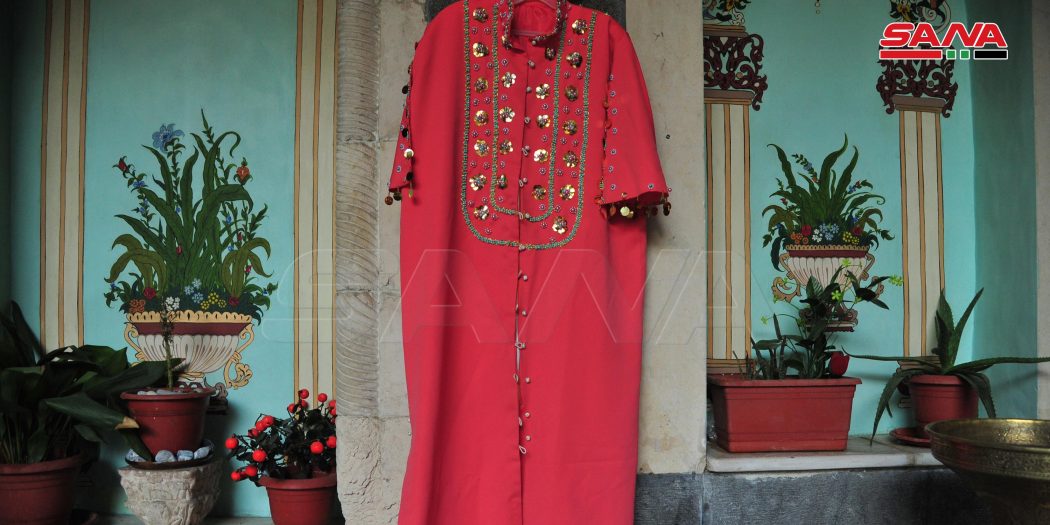The Damascene kaftan industry is one of the ancient Syrian textile industries that has won several prizes during international exhibitions.
This industry is a traditional folk that appeared in many cultures several centuries ago. Long sleeves and a length that reaches the ankles, according to each culture, often distinguish it.
Wool, silk and cotton are usedd in the kaftan industry, for which the countries of the Maghreb are famous, such as the Moroccan and Algerian Kaftans.
In ancient cultures, it was known as a symbol for kings and sultans, where men and women used to wear kaftans, but today only women wear it.
In Syria, this rare industry is still available, as the eighty-year-old Damascene woman, Sophia Al-Ashqar, who lives in Hanania neighborhood in old Damascus, still creates the most beautiful and elegant kaftans.
Al-Ashqar told the Syrian News Agency (SANA) about her creativity in making the Damascene Kaftan that she inherited from her father, stressing that her love for elegance and beauty led her to become a professional in Kaftan design. Her first step in design began when she sewed the first dress for her little doll when she was ten years old.
 Sophia Al-Ashqar won several international medals in the ” Folk Fashion Art “at the International Exhibition of Folk Fashion that was held in Mexico City, Mexico in 1997, where she came third in a competition with 123 models representing 71 countries.
Sophia Al-Ashqar won several international medals in the ” Folk Fashion Art “at the International Exhibition of Folk Fashion that was held in Mexico City, Mexico in 1997, where she came third in a competition with 123 models representing 71 countries. In 1994, The Institute of People’s Fashion Studies in Chicago awarded her the second prize for designing and developing the Syrian Kaftan, which combines the past and the present and has become one of the most important dresses that attract women in the West.
Regarding her special style of embroidering the Damascene kaftan, Al-Ashqar explains that she uses many types of precious fabrics, including velvet, silk, aghabani, and brocade, to weave the Damascene kaftan. In some cases, thin linen is used to make lightweight kaftans that are suitable for regions with warm climates. “I always try to add my own touch to my products in terms of lines, colors and shapes to keep them up to date with the latest fashion,” she added.
She went on to say, “to make the kaftan, you have to go through several stages of designing, sewing, drawing, embroidering, then washing and ironing and finally placing the shiny stones, so we have a unique piece of art of great magnificence and perfection, in which the spirit of the craftsman, artist and creator is mixed”.
Among the funny stories regarding the luxury of the Damascene kaftan, Al-Ashqar said, ” many years ago, a girl in Paris was looking for a wedding dress, but she did not like any of the dresses she saw there, until she saw the kaftan during her visit to Al-Sham, where she found that the Damascene kaftan is what she was looking for and asked to make a special dress for her.”
“Although I’m 80, I still have ideas for unique designs that make the Syrian kaftan shine forever,” she concluded.
Amal Farhat

